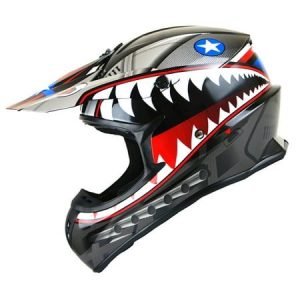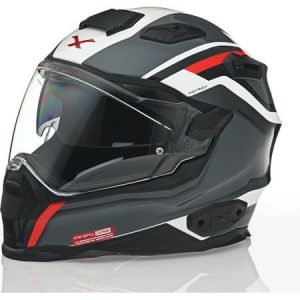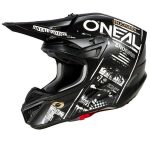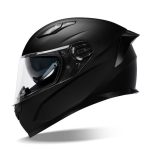Your motorcycle helmet is your loyal guardian on the road, protecting your head from wind, debris, and impact. But just like your trusty steed, your helmet requires regular cleaning and maintenance to ensure optimal performance and longevity. A dirty helmet can compromise visibility, hygiene, and even the structural integrity of the materials over time. This guide empowers you to take charge of your helmet’s care, providing step-by-step instructions, recommended products, and valuable tips for keeping your helmet clean and fresh.
Unveiling the Benefits of Cleaning Your Motorcycle Helmet
Regular motorcycle helmet cleaning offers a multitude of benefits that enhance your riding experience and helmet’s lifespan. Here’s why you should prioritize helmet hygiene:

-
Enhanced Visibility: A dirty visor or shield can obstruct your vision with grime, dust, and insect splatter. Regular cleaning ensures a clear view of the road, crucial for safe riding.
-
Improved Hygiene: Sweat buildup from intense rides can create an unpleasant odor and foster bacteria growth inside the helmet liner. Consistent cleaning promotes a fresh and hygienic helmet interior.
-
Extended Helmet Lifespan: Dirt, dust, and debris can accelerate wear and tear on the helmet’s components. Proper cleaning removes these contaminants, protecting the helmet’s materials and prolonging its lifespan.
-
Maintaining Optimal Performance: A neglected helmet with a scratched or foggy visor can hinder your focus and reaction time. Regular cleaning safeguards the visor and liner, ensuring optimal performance for every ride.
By incorporating helmet cleaning into your regular motorcycle maintenance routine, you can reap these advantages and ensure a safe, comfortable, and enjoyable riding experience.
Assembling Your Cleaning Arsenal: Essential Tools and Products
Before diving into the cleaning process, gather the necessary tools and products to ensure a thorough and effective job. Here’s your helmet cleaning shopping list:
-
Mild Helmet Cleaner: Opt for a gentle, pH-balanced cleaner specifically designed for motorcycle helmets. Avoid harsh detergents or abrasive cleaners that can damage the helmet’s materials.
-
Microfiber Cloths: Microfiber cloths are ideal for cleaning the helmet’s visor and shell without scratching the surfaces. They effectively absorb dirt and grime without leaving streaks or lint.
-
Lukewarm Water: Fill a bucket or basin with lukewarm water for rinsing the helmet and cleaning cloths.

-
Helmet Liner Spray (Optional): A dedicated helmet liner spray can help eliminate odors and freshen up the helmet’s interior. Choose a spray designed for motorcycle helmets and follow the manufacturer’s instructions.
-
Soft Bristle Toothbrush (Optional): A soft-bristled toothbrush can be helpful for cleaning hard-to-reach areas around the vents and crevices of the helmet.
Pro Tip: Consider keeping a separate microfiber cloth specifically for cleaning your helmet’s visor to avoid cross-contamination with other cleaning tasks.
With your cleaning arsenal assembled, you’re ready to tackle the task of restoring your helmet to its pristine state.
The Cleaning Cavalry Arrives: A Step-by-Step Guide
Now that you have your cleaning supplies within reach, let’s delve into the step-by-step process of cleaning your motorcycle helmet:
1. Pre-Cleaning Prep
-
Park Smart: Find a well-lit, shaded area to work on your helmet. Direct sunlight can cause cleaning products to dry too quickly, potentially leaving streaks.
-
Gear Up: Remove your helmet from your motorcycle and place it on a clean, stable surface. Protect any nearby surfaces from potential drips or spills with a towel or newspaper.
-
Preliminary Inspection: Before diving into cleaning, give your helmet a quick once-over. Look for any loose parts, damaged areas, or excessive debris that might require special attention.

2. Taming the Visor: A Quest for Clarity
-
Separate the Visor: Most motorcycle helmets allow for easy visor removal. Consult your helmet’s manual for specific instructions on detaching the visor.
-
Soak the Bugs Away: Fill a separate basin with lukewarm water and a mild dish soap solution. Gently submerge the visor for a few minutes to loosen stuck-on bugs, dirt, and grime.
-
Microfiber Magic: After soaking, dampen a clean microfiber cloth with the lukewarm water solution. Gently wipe down the visor’s inner and outer surfaces, using a circular motion.
-
Stubborn Stains? For particularly stubborn insect splatter or stains, use a soft, damp corner of the microfiber cloth and dab gently. Avoid scrubbing aggressively, as this can potentially scratch the visor.
-
Rinse and Repeat: Rinse the visor thoroughly with clean water to remove any cleaning solution residue. Dry the visor completely with a fresh microfiber cloth to prevent water spots.
Pro Tip: If your visor features an anti-fog or anti-scratch coating, consult the manufacturer’s recommendations for specific cleaning instructions to avoid damaging the coating.
3. Conquering the Shell: A Pristine Exterior
-
Dust it Off: Gently remove any loose dust or debris from the helmet’s shell with a dry microfiber cloth.
-
Soap it Up: Dampen another microfiber cloth with the lukewarm water solution and a few drops of your helmet cleaner.
-
Wipe with Care: Gently wipe down the helmet’s shell using circular motions. Pay close attention to areas that collect more dirt, such as around the vents and intake ports.
-
Don’t Forget the Details: Use a cotton swab dipped in the cleaning solution to clean any hard-to-reach areas around the vents, straps, and fasteners.
-
Rinse and Dry: Rinse the entire helmet with clean water to remove any cleaning solution residue. Dry the shell thoroughly with a clean, dry microfiber cloth.

4. Taming the Inner Sanctuary: The Motorcycle Helmet Liner
-
Removal Time: Most motorcycle helmet liners are removable and washable. Consult your helmet’s manual for specific instructions on detaching the liner.
-
Pre-Treat Stains: If there are any visible stains on the liner, pre-treat them with a mild stain remover specifically designed for fabrics. Follow the product instructions carefully.
-
Gentle Wash: Hand-wash the helmet liner in lukewarm water with a gentle laundry detergent. Avoid using harsh detergents, bleach, or fabric softeners, as these can damage the liner’s materials.
-
Air Drying is Key: Do not wring out the liner excessively. Let it air dry completely in a well-ventilated area out of direct sunlight. Avoid using a clothes dryer, as the heat can damage the liner’s shape and materials.
Pro Tip: While the liner is drying, take this opportunity to wipe down the inside of the helmet shell with a disinfectant wipe to remove any lingering sweat or bacteria.
5. Reassembly and Final Touches
-
Liner Check: Once the liner is completely dry, inspect it for any tears, loose stitching, or signs of excessive wear and tear. If you find any damage, consider replacing the liner for optimal safety and comfort.
-
Putting it Back Together: Reinstall the liner and visor according to your helmet’s manual. Ensure all components are securely fastened and functioning properly.
-
Deodorize (Optional): If desired, you can use a helmet liner spray to freshen up the interior after reinstalling the liner. Follow the manufacturer’s instructions for proper application.
-
A Final Shine: With a clean, dry microfiber cloth, buff the helmet’s shell to a polished finish.
Safeguarding Your Investment: Motorcycle Helmet Care Beyond Cleaning
While regular cleaning forms the foundation of proper helmet care, there are additional practices to extend your helmet’s lifespan and ensure optimal performance:

-
Store it Right: When not in use, store your helmet in a cool, dry, and well-ventilated place. Avoid leaving it in direct sunlight for extended periods, as UV rays can degrade the helmet’s materials over time.
-
Travel Wise: If you transport your helmet on your motorcycle, use a helmet bag or secure it properly to prevent scratches or damage from bouncing around.
-
Avoid Harsh Chemicals: Never expose your helmet to harsh chemicals, solvents, or strong cleaners. These can damage the helmet’s materials and compromise its structural integrity.
-
Know Your Limits: Helmets have a finite lifespan. Over time, materials can degrade due to wear and tear, exposure to elements, and repeated impacts. Inspect your helmet regularly for signs of damage, such as cracks, deep scratches, or excessive wear on the liner. If you experience a significant impact while wearing your helmet, it’s crucial to replace it, even if there’s no visible damage.
-
Consider a Tinted Visor: For sunny conditions, a tinted visor can reduce glare and eye strain, enhancing your riding comfort and visibility. Choose a visor with a tint level that complies with local regulations.
-
Invest in a Visor Cleaning Kit: A dedicated visor cleaning kit often includes a specialized cleaning solution and anti-fog wipes formulated for motorcycle visors. These products can help maintain a clear and fog-free visor for optimal vision.
By following these tips alongside consistent cleaning, you can ensure your motorcycle helmet provides reliable protection, comfort, and a clear view for every ride.


